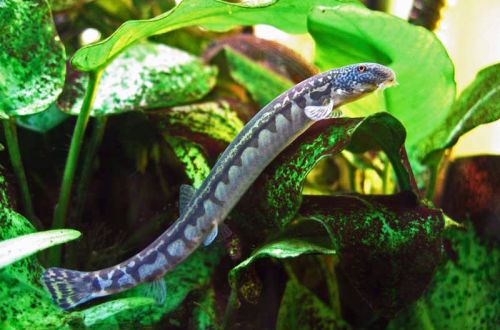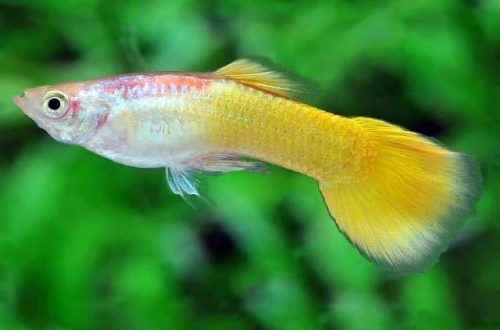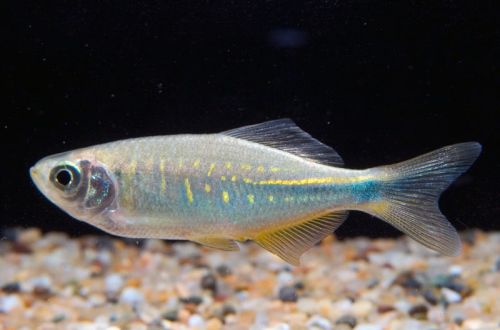
Japanese Char
Japanese Char or Nivaella delicata, scientific name Niwaella delicata, belongs to the family Cobitidae (Loaches). In addition to aquarism, it is also a commercial fish. Most common in Japan, rare in Europe. Due to the special plant diet and specific conditions of keeping, it cannot be recommended for beginner aquarists.

Contents
Habitat
Endemic to the largest Japanese island of Honshu. Lives in mountain streams and rivers. The natural habitat is characterized by fast, sometimes turbulent flows of oxygen-rich water. The substrates are rocky, the riverbeds have numerous cascades. Aquatic vegetation is practically absent, vegetation is observed only near the coast. Shallow and well-lit water promotes the formation of a biofilm on the surface of the stones, consisting of algae and microscopic organisms. This biofilm is the basis of the food of the Japanese charr.
Brief information:
- The volume of the aquarium – from 80 liters.
- Temperature – 20-24°C
- Value pH — 6.5–7.5
- Water hardness – soft (1-8 dGH)
- Substrate type – fine gravel, rocky
- Lighting – bright
- Brackish water – no
- Water movement – moderate / strong
- The size of the fish is 9–11 cm.
- Nutrition – plant foods, algae
- Temperament – peaceful
- Content in a group of at least 3–4 individuals
Description
Adults reach a length of up to 9-11 cm. Outwardly, the fish are more like eels for their elongated snake-like body shape. Sexual dimorphism is weakly expressed. Males and females are practically indistinguishable from each other. The coloration is predominantly grey. Abdomen monochromatic light silvery. The back and sides of the fish have a complex brownish ornament, the shade may change depending on the lighting.
Food
The basis of the diet in the wild, as mentioned above, is algae and microorganisms. In a home aquarium, accordingly, the diet should also be plant-based. Ideal conditions are considered when algae grow in sufficient quantities on the internal elements of decoration and dry food (flakes, granules) is additionally served to balance the diet. As an alternative, you can use special gelatin-based food for herbivorous fish, where pieces of plants, vegetables and fruits are present, or make it yourself.
Maintenance and care, arrangement of the aquarium
Aquarium sizes suitable for 4 fish start from 80 liters. When keeping, it is important to create a moderate water flow and a high content of dissolved oxygen. To do this, you will need to install a productive filtration system that can provide sufficient water movement. In addition, you can independently make an artificial flow system in the aquarium. Additional aeration will also not be superfluous. Lighting level is high.
Pebble substrate, large boulders and driftwood are used in the design. The latter will become a place for the growth of algae – an additional source of food. It is worth noting that driftwood must be carefully processed to avoid leaching of various substances, including tannins, which can make the water cloudy or color it brownish. Under such conditions, algae growth will be stopped.
The presence of living plants is not necessary, if desired, you can purchase several unpretentious species that can grow in strong currents. It is recommended to plant in pots fixed at the bottom.
Maintenance of the aquarium is standard and comes down to weekly replacement of part of the water (30–40% of the volume) with fresh water, regular cleaning of glass from plaque and soil from organic waste.
Behavior and Compatibility
A peaceful and accommodating species, however, the specific conditions of detention limit the circle of possible fish to the neighborhood. Intraspecific relationships are built on a hierarchy of strong and weak individuals, no conflicts between relatives have been noted, it is necessary to acquire a group of 3-4 fish.
Breeding / breeding
In the wild, spawning begins in late spring, in May, as temperatures rise and more food is available. At the time of writing, no cases of Japanese charr breeding in a home aquarium have been recorded.
Fish diseases
By their nature, non-ornamental fish species that are close to their wild relatives are quite hardy, have high immunity and resistance to various diseases. Health problems can be the result of inappropriate conditions, so before starting treatment, check the quality and parameters of the water. If necessary, bring all values back to normal and only then begin treatment, if necessary. Read more about diseases, their symptoms and methods of treatment in the section “Diseases of aquarium fish”.





